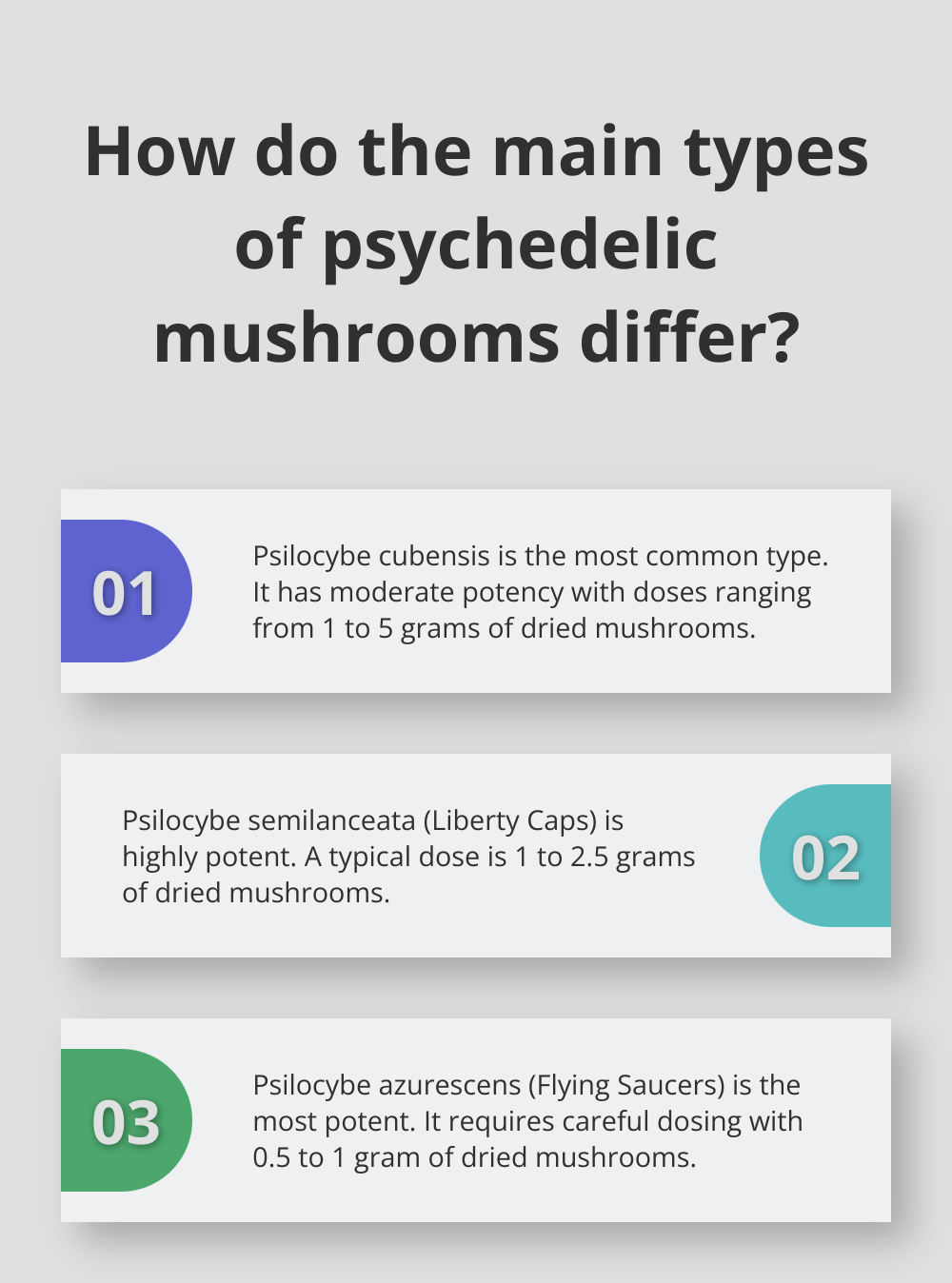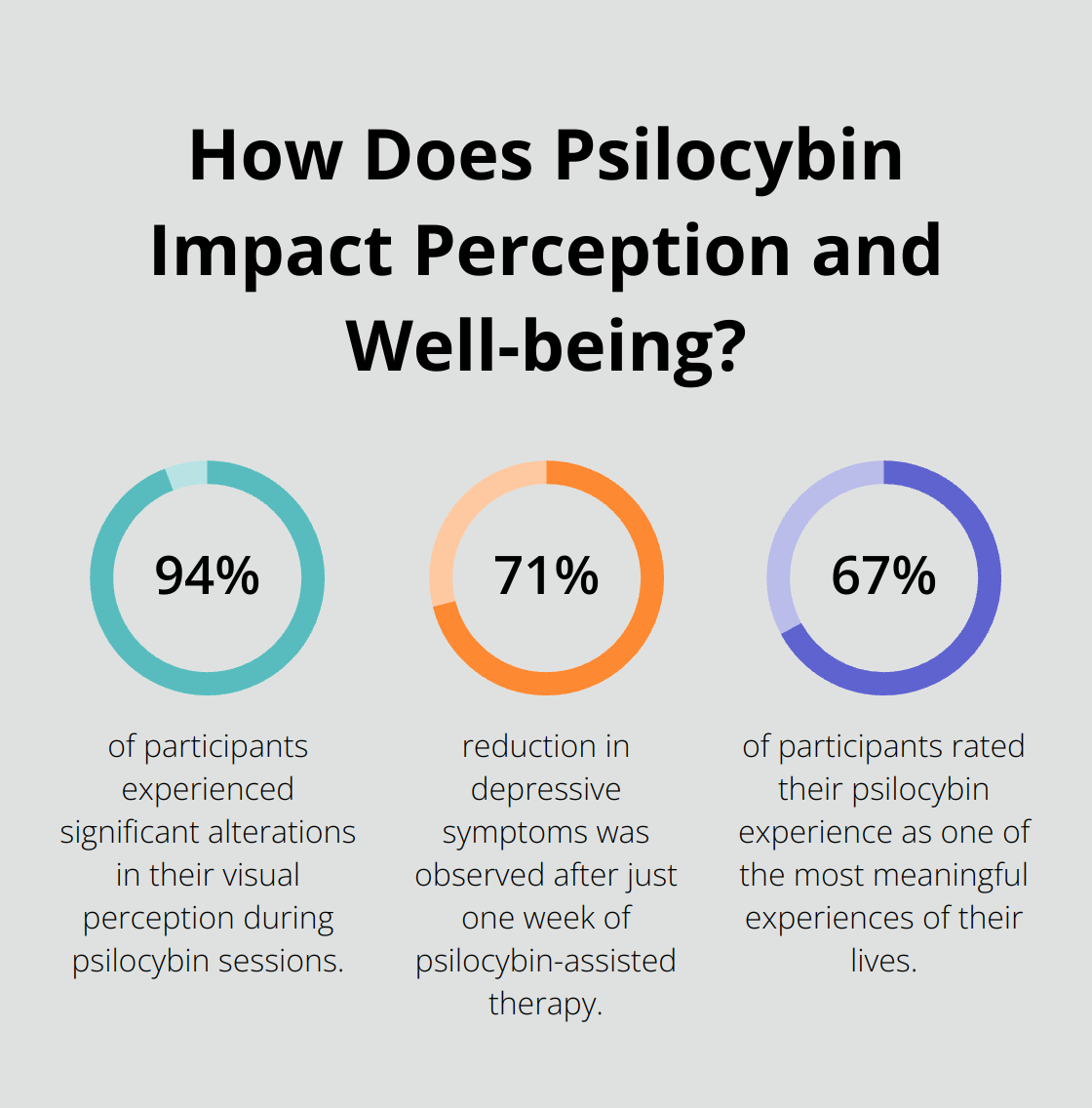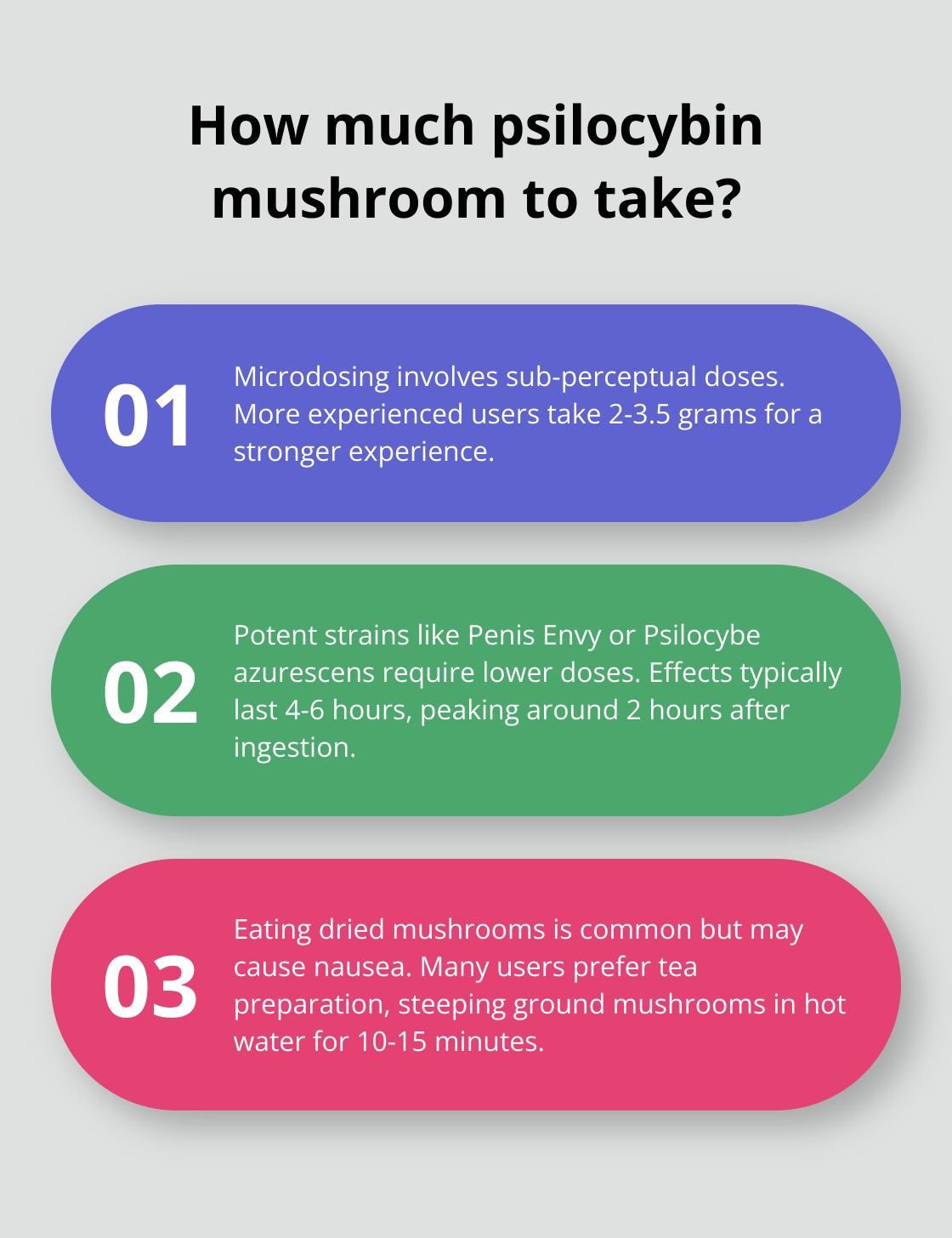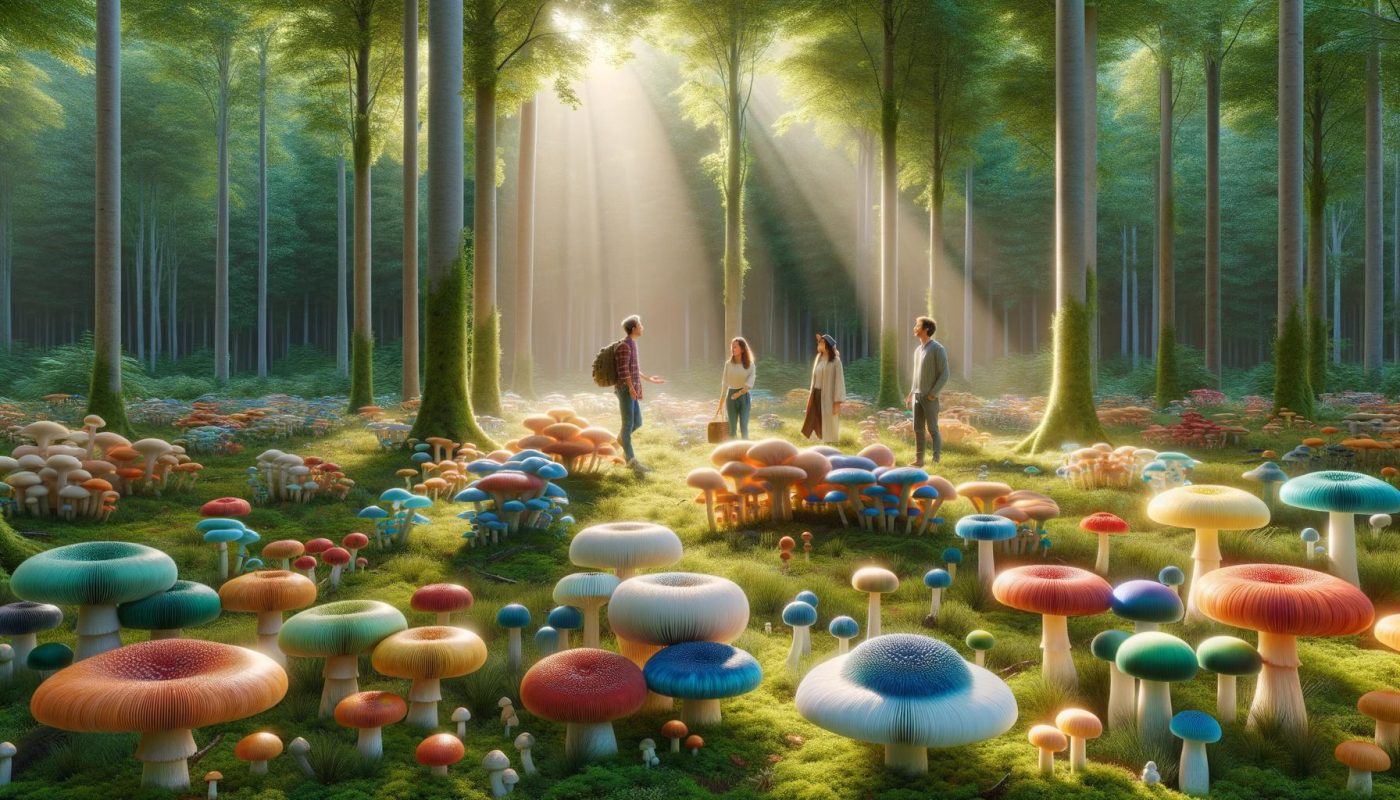Uncategorized
The Ultimate Guide to Psychedelic Mushrooms
Psychedelic mushrooms have fascinated humans for centuries, offering unique experiences and potential benefits. At Newphoria, we’ve created this comprehensive guide to serve as a “Psychedelic Mushrooms Bible” for those seeking to understand these remarkable fungi.
From exploring various species to discussing effects, safety measures, and therapeutic possibilities, we’ll cover essential information for both newcomers and experienced users. Let’s embark on a journey through the captivating world of psychedelic mushrooms.
Main Types of Psychedelic Mushrooms
Psychedelic mushrooms come in various species, each with unique characteristics and effects. This chapter explores four of the most well-known types, providing insights into their potency, appearance, and typical uses.
Psilocybe cubensis: The Popular Choice
Psilocybe cubensis stands as the most common and widely cultivated psychedelic mushroom. It’s known for its reliability and moderate potency. Golden Teacher, Penis Envy, and B+ are popular strains of this species.

Golden Teacher often appeals to beginners due to its balanced effects and spiritual insights. Penis Envy, in contrast, is known for its high potency and intense visual experiences. B+ earns praise for its large yields and resilience during cultivation.
These mushrooms typically have golden-brown caps and grow easily at home using spore syringes or grow kits. The average dose ranges from 1 to 5 grams of dried mushrooms (depending on the desired intensity of effects).
Psilocybe semilanceata: Nature’s Little Powerhouse
Commonly known as Liberty Caps, Psilocybe semilanceata is one of the most potent psilocybin-containing mushrooms. These small, thin mushrooms have a distinctive nipple-like protrusion on their caps.
Liberty Caps are widely distributed in the temperate areas of the Northern Hemisphere, particularly in Europe. They’re known for their intense visual effects and profound introspective experiences. Due to their high potency, a typical dose is lower than with P. cubensis, usually ranging from 1 to 2.5 grams of dried mushrooms.
Psilocybe azurescens: The Potency King
Psilocybe magic mushrooms are best known for their main natural product, psilocybin, and its dephosphorylated congener, the psychedelic metabolite psilocin. Psilocybe azurescens, or Flying Saucers, are native to the Pacific Northwest of the United States and are characterized by their large, caramel-colored caps.
Flying Saucers are not for inexperienced users. Their potency can be up to three times that of P. cubensis, requiring careful dosing. A typical dose might be as low as 0.5 to 1 gram of dried mushrooms. These mushrooms induce powerful visuals and profound altered states of consciousness.
Amanita muscaria: The Outlier
Amanita muscaria, or Fly Agaric, stands apart from the other mushrooms mentioned. Unlike the Psilocybe genus, it doesn’t contain psilocybin. Instead, its psychoactive compounds are muscimol and ibotenic acid.
Recognizable by its iconic red cap with white spots, Amanita muscaria has a long history of use in shamanic practices, particularly in Siberia. The effects differ quite a bit from psilocybin mushrooms, often described as more deliriant and dissociative.
It’s important to note that Amanita muscaria can be toxic if not prepared correctly. The ibotenic acid needs to convert to muscimol through a careful drying or cooking process. Due to these risks, many experts advise against its recreational use.
As we move forward to explore the effects and potential benefits of psychedelic mushrooms, it’s essential to understand that each type offers a unique experience. The next chapter will shed light on how these fascinating fungi interact with our minds and bodies, and the potential therapeutic applications that researchers are currently investigating.
How Psychedelic Mushrooms Affect the Mind and Body
Psychedelic mushrooms impact both the mind and body profoundly, offering a range of effects that can be exhilarating and therapeutic. Understanding these effects is important for anyone considering their use.
Perceptual and Cognitive Changes
Psychedelic mushrooms alter perception and consciousness significantly when consumed. Users often report vivid visual and auditory hallucinations, synesthesia (blending of senses), and distorted sense of time. A study published in the Journal of Psychopharmacology found that 94% of participants experienced significant alterations in their visual perception during psilocybin sessions.

These perceptual changes can lead to new insights and perspectives. Many users describe feeling more open-minded and creative.
Emotional and Mood Effects
Psychedelic mushrooms often induce powerful emotional experiences. Users frequently report feelings of euphoria, empathy, and connectedness. However, it’s important to note that challenging emotions can also surface. A 2016 survey found that participants reported both acute and enduring positive and negative consequences after ingesting psilocybin mushrooms.
These emotional breakthroughs can lead to lasting positive changes. Many users report improved mood and reduced anxiety in the weeks and months following a psychedelic experience. A study from Johns Hopkins University showed that 80% of participants reported improvements in their well-being or life satisfaction after psilocybin-assisted therapy.
Therapeutic Potential
The therapeutic applications of psychedelic mushrooms are gaining significant attention in the medical community. Research indicates promising results for treating various mental health conditions.
For depression, a 2020 study in JAMA Psychiatry found that psilocybin-assisted therapy led to a 71% reduction in depressive symptoms after just one week. Another study published in the New England Journal of Medicine showed that psilocybin mushrooms can help with depression, anxiety, and PTSD, rewiring minds successfully.
Anxiety disorders (particularly end-of-life anxiety in terminal patients) have also shown improvement with psilocybin therapy. A study found that high-dose psilocybin produced large decreases in clinician- and self-rated measures of depressed mood and anxiety, along with increases in quality of life.
PTSD and addiction are other areas where psychedelic mushrooms show promise. The Multidisciplinary Association for Psychedelic Studies (MAPS) currently conducts trials on psilocybin for PTSD treatment, with preliminary results showing significant symptom reduction.
Personal Growth and Spiritual Experiences
Many users report profound personal and spiritual growth from psychedelic mushroom experiences. These often include a sense of unity with nature or the universe, ego dissolution, and confronting deep-seated personal issues.
A 2006 Johns Hopkins study found that 67% of participants rated their psilocybin experience as one of the most meaningful experiences of their lives (comparable to the birth of a first child or death of a parent). Two-thirds of participants also reported the experience increased their well-being or life satisfaction.
These experiences often lead to lasting changes in personality and outlook. A 2011 study in the Journal of Psychopharmacology found that a single high dose of psilocybin could bring about long-term changes in the personality trait of openness, which is associated with creativity, curiosity, and aesthetic appreciation.
As we explore the effects of magic mushrooms on the mind and body, it becomes clear that their impact extends far beyond temporary altered states. The next chapter will discuss safe usage practices and harm reduction strategies to help users navigate these powerful experiences responsibly.
How to Use Psychedelic Mushrooms Safely
Dosage and Administration
Psychedelic mushrooms require careful dosing. The use of low sub-perceptual doses of psychedelics (“microdosing”) has gained popularity in recent years, although anecdotal reports claim various benefits. More experienced users can take 2-3.5 grams for a stronger experience. Potent strains like Penis Envy or Psilocybe azurescens need lower doses.

The method of consumption affects the experience. Eating dried mushrooms is common but may cause nausea. Many users prefer tea preparation to reduce nausea. To make tea, grind the mushrooms, steep in hot (not boiling) water for 10-15 minutes, strain, and drink. Adding ginger or lemon can improve taste and potentially enhance effects.
Timing plays a key role. Effects typically last 4-6 hours, with a peak around 2 hours after ingestion. Plan your day accordingly, ensuring you have no responsibilities for at least 8 hours after dosing.
Creating the Right Environment
The environment significantly impacts your experience. Choose a comfortable, familiar setting. Nature can offer a beautiful backdrop but presents risks if you’re unfamiliar with the area. A clean, cozy room with soft lighting works well for many users.
Have a sober trip sitter present, especially for higher doses or less experienced users. They provide safety and reassurance if challenging moments arise.
Prepare activities beforehand. Music playlists, art supplies, or journals can enhance the experience. Avoid screens and technology, which can disorient or induce anxiety.
Understanding Risks and Contraindications
While physically safe for most healthy adults, psychedelic mushrooms carry psychological risks. Those with a personal or family history of psychosis or schizophrenia should avoid use. Mixing with other substances (especially alcohol or stimulants) increases risks significantly.
Physical side effects can include nausea, increased heart rate, and dilated pupils. More concerning are rare cases of Hallucinogen Persisting Perception Disorder (HPPD), where visual disturbances persist after use.
Emotional challenges during the experience are common. Prepare for potentially difficult emotions or memories to surface. These challenges often lead to the most profound insights and healing.
Integration and Aftercare
Integration – processing and applying insights from your experience – holds great importance. Keep a journal to record thoughts and revelations. Many users find meditation or yoga helpful in the days following use.
Give yourself time to rest and reflect. Avoid making major life decisions immediately after a psychedelic experience. Instead, allow insights to settle and discuss them with trusted friends or a therapist experienced in psychedelic integration.
Space out your experiences. While not physically addictive, frequent use can diminish the impact and potentially lead to psychological dependence. Wait at least a month between sessions to maintain the magic and allow for full integration.
Final Thoughts
Our psychedelic mushrooms bible reveals the profound impact these fungi have on perception, mood, and consciousness. Many users report life-changing experiences, from emotional breakthroughs to spiritual awakenings. The therapeutic potential of these substances receives increasing recognition, with promising research showing benefits for conditions like depression, anxiety, and PTSD.

Responsible use remains paramount when exploring psychedelic mushrooms. Proper dosing, a safe environment, and a trusted trip sitter contribute to a positive experience. Integration practices help users apply insights to daily life, maximizing the benefits of their journeys.
As research progresses, the future of psychedelic mushrooms in therapy and personal development looks promising. For those who want to explore psychedelic mushrooms safely and legally, Newphoria offers a range of high-quality products. Their commitment to quality makes them a trusted source in the Canadian market.

